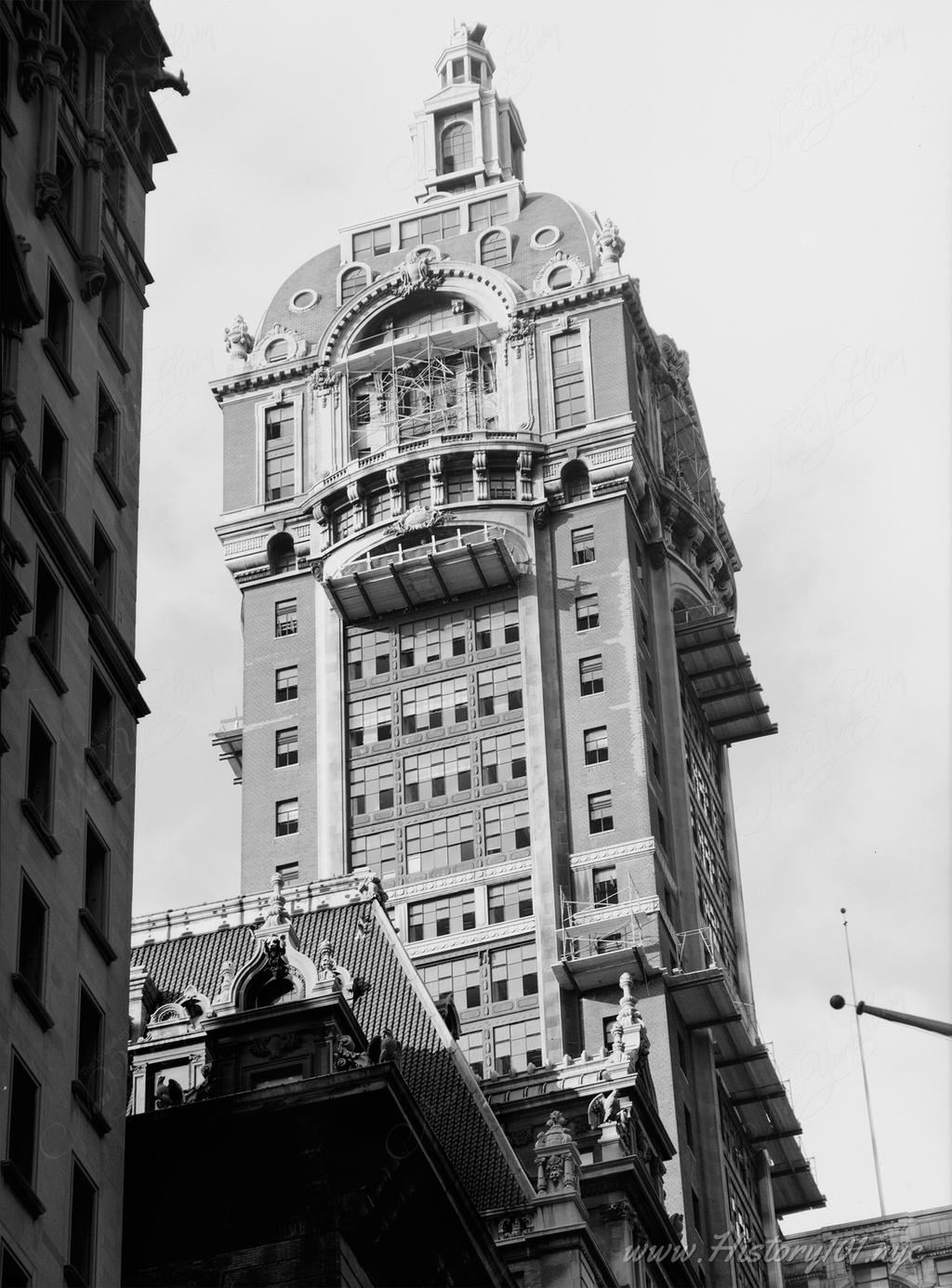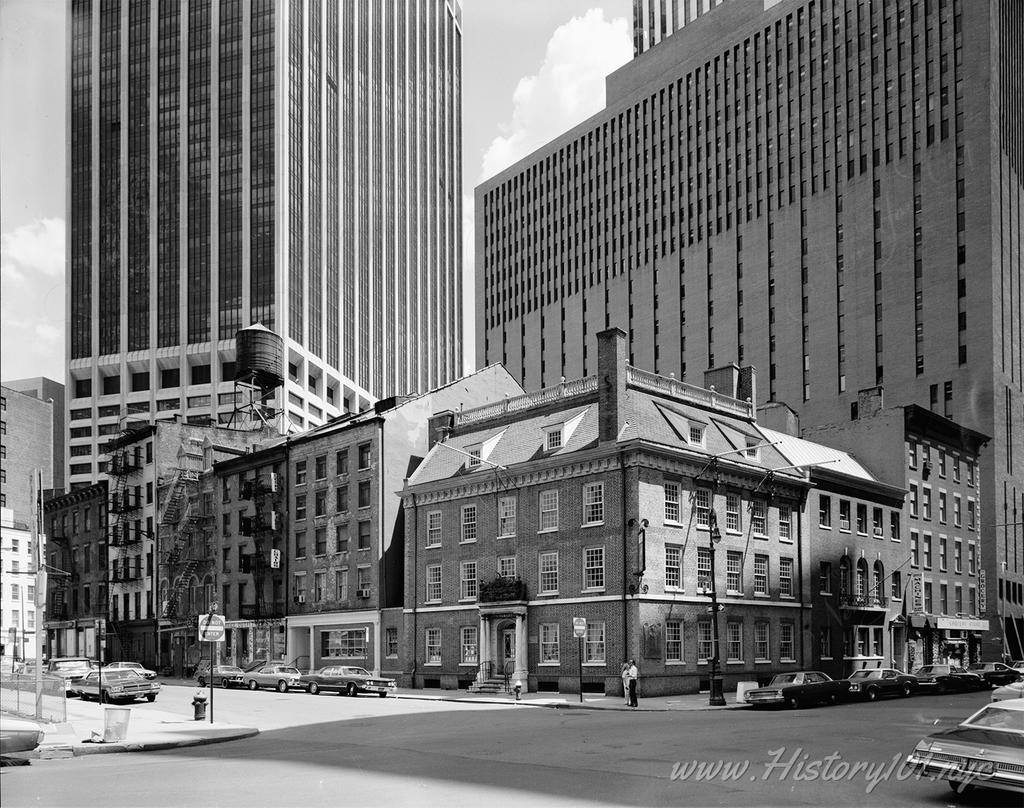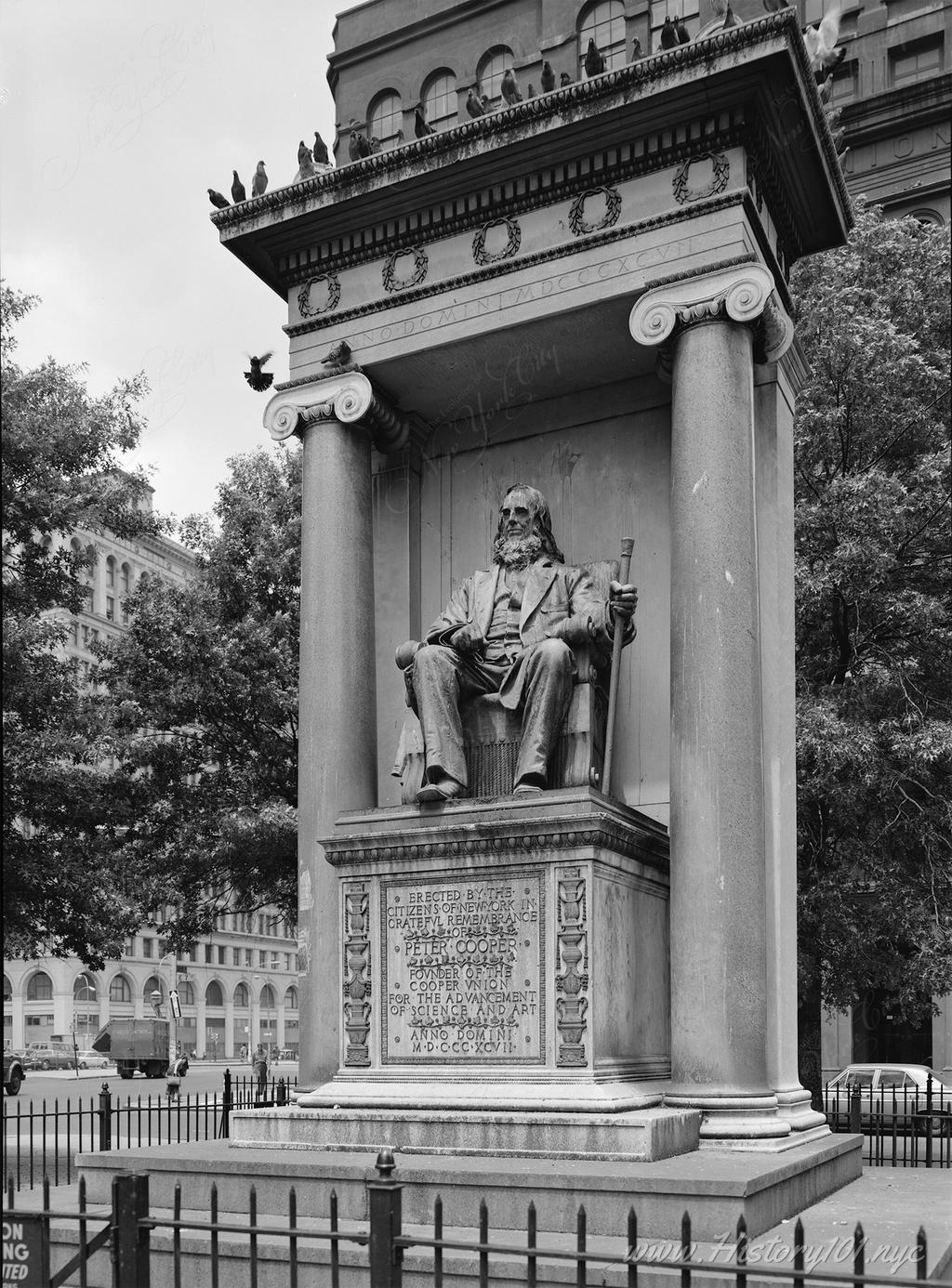
1965-1970 NYC: Social Unrest, Urban Renewal, and the Counterculture Wave
The history of New York City between 1965 and 1970 was marked by significant societal upheaval and transformation. This era saw the escalation of social unrest, driven by continued civil rights struggles and the emerging anti-Vietnam War movement. Major protests and demonstrations became frequent sights in the city, symbolizing a broader national discontent and a quest for profound societal change.
This period was also notable for its intense focus on urban renewal. Initiatives such as the construction of the World Trade Center, which began in 1966, epitomized the city’s ambitions to reshape its skyline and strengthen its global economic standing. However, these developments often came at the cost of community displacement, sparking debates and resistance concerning the consequences of rapid urbanization and gentrification.
Culturally, New York City was at the heart of the counterculture movement, which embraced new forms of artistic expression and lifestyle choices. Neighborhoods like the East Village became hubs for bohemian life, attracting artists, musicians, and young people all drawn to the city’s liberal atmosphere. Iconic music venues like the Fillmore East opened their doors, providing a stage for groundbreaking performances by rock and roll, folk, and blues artists, further cementing New York’s status as a cultural trendsetter.
In the realm of politics and governance, the city experienced shifts as well, with Mayor John Lindsay’s administration facing numerous challenges, from fiscal crises to labor strikes. Lindsay’s attempts to address the needs of a diverse and often divided city reflected the broader struggles facing urban America during this tumultuous time.
By the end of 1970, New York City had undergone profound changes that reshaped its social, cultural, and physical landscapes. The challenges and achievements of these years left an indelible mark on the city, shaping its policies and identity for future generations.
1965-1970 Timeline of New York City’s History, USA
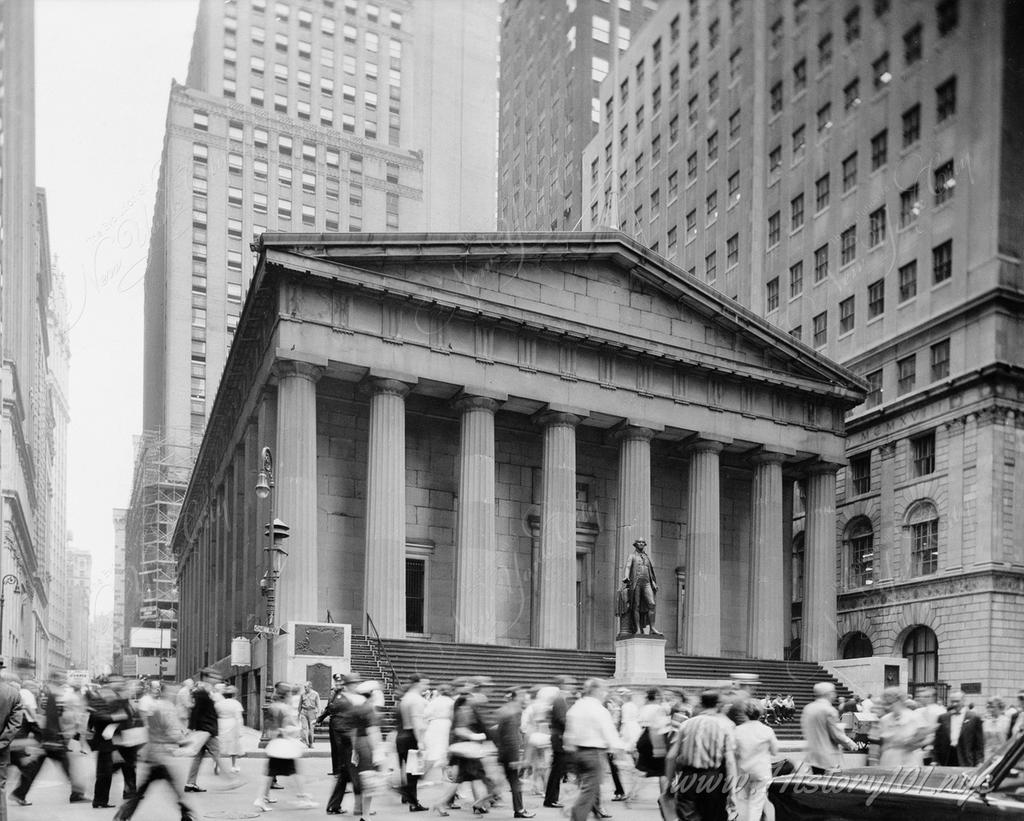
1965: U.S. Custom House
Pedestrians crowd the intersection of Main And Nassau Streets at U. S. Custom House on 28 Wall Street in Downtown Manhattan.
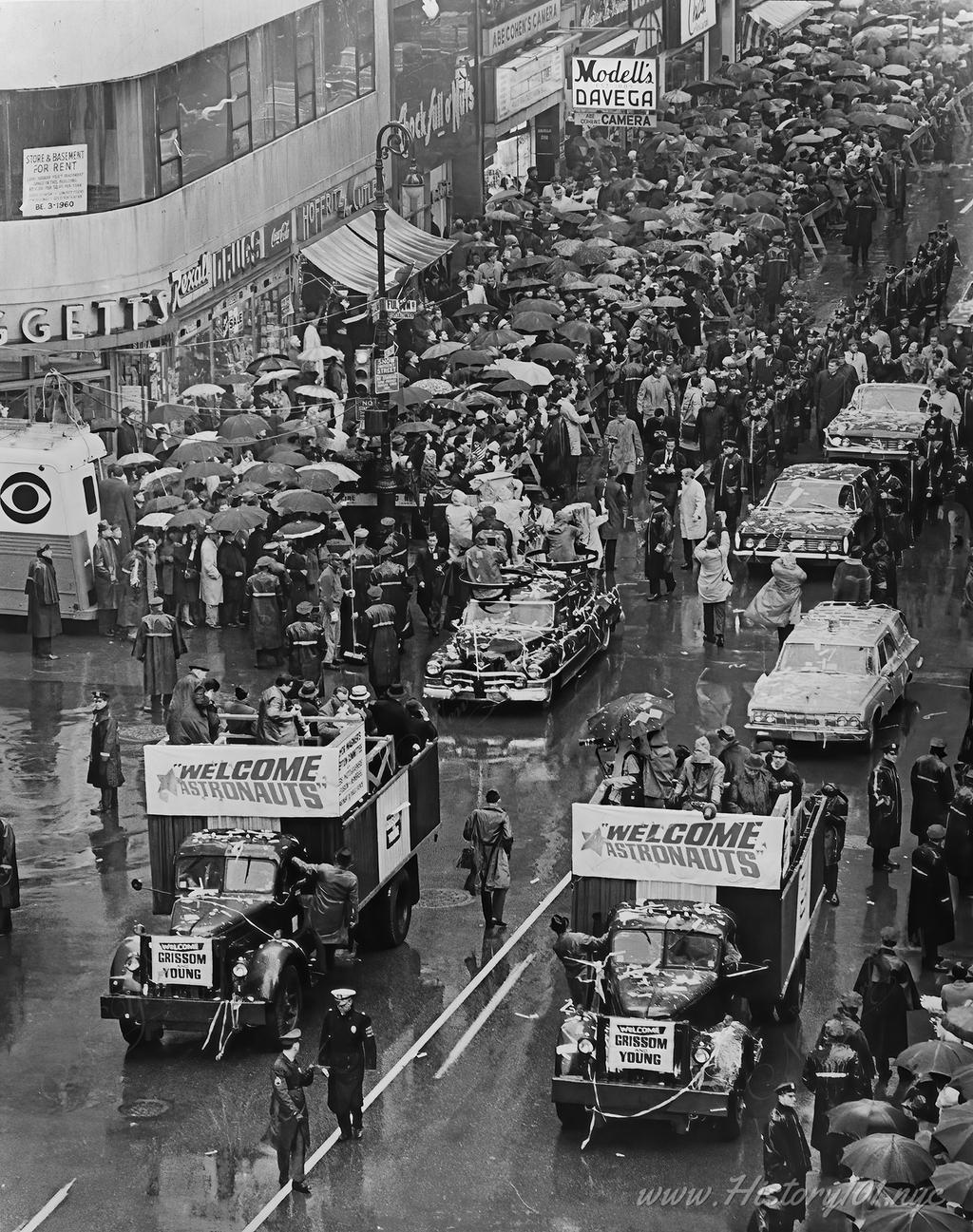
1965: Astronaut Parade
Aerial photograph of a ticker tape parade for astronauts Virgil Grissom and John Young (seated in last car with Vice President Humphrey).
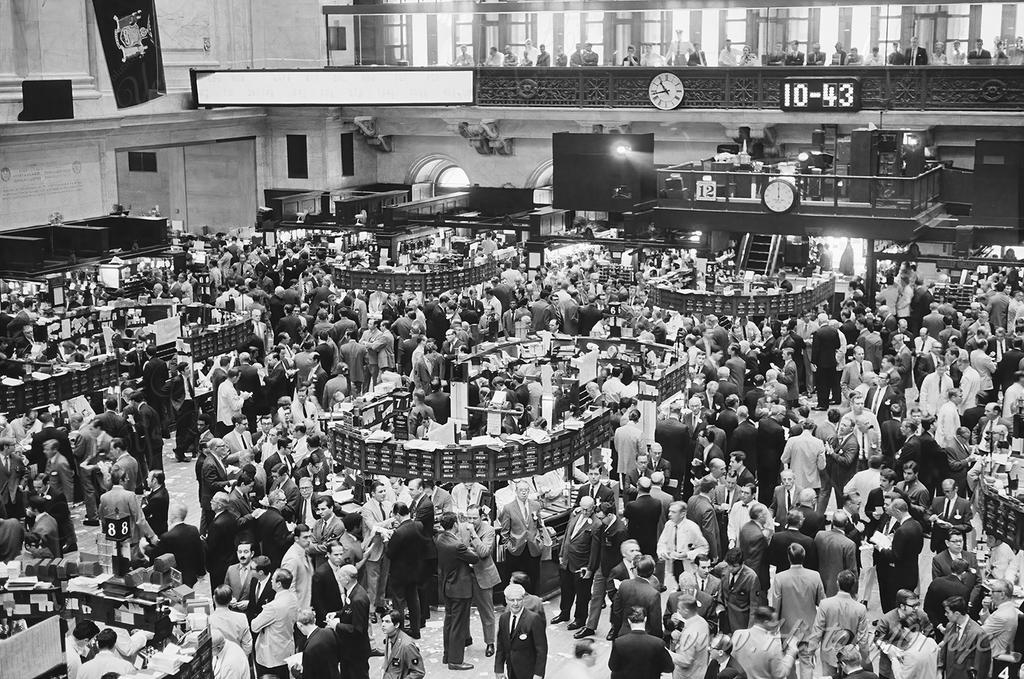
1969: NYC Stock Exchange & Wall Street
Photograph of a packed floor at the New York City Stock Exchange on Wall Street.
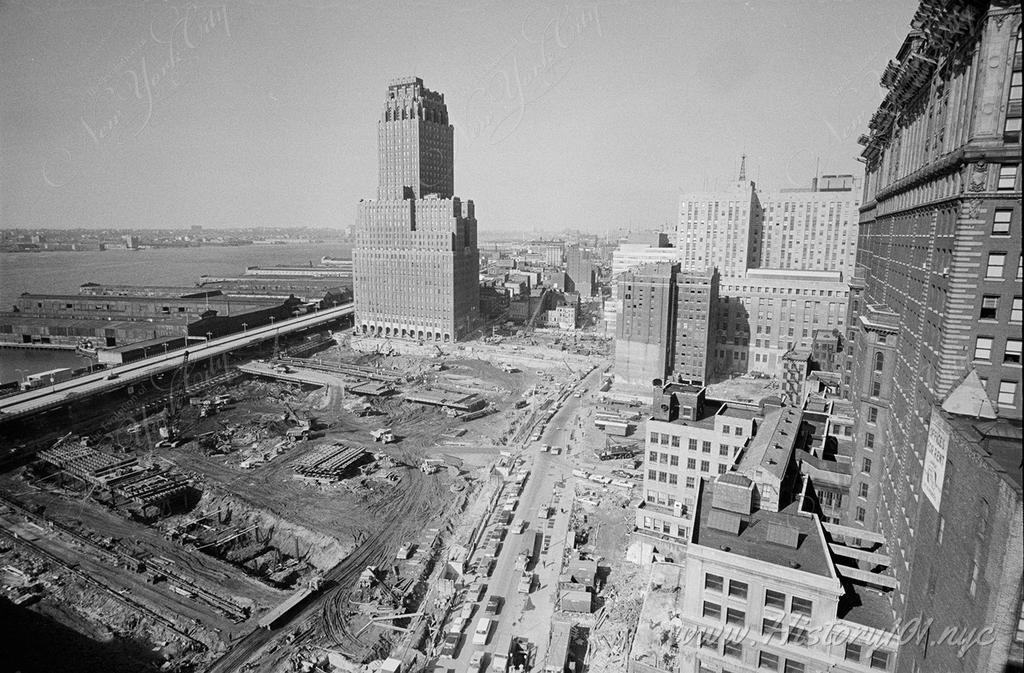
1968: Aerial View of World Trade Center Construction Site
A bird's eye view of the future site of the World Trade Center. An excavator is seen clearing and leveling land and preparing the foundations of the Twin Towers.
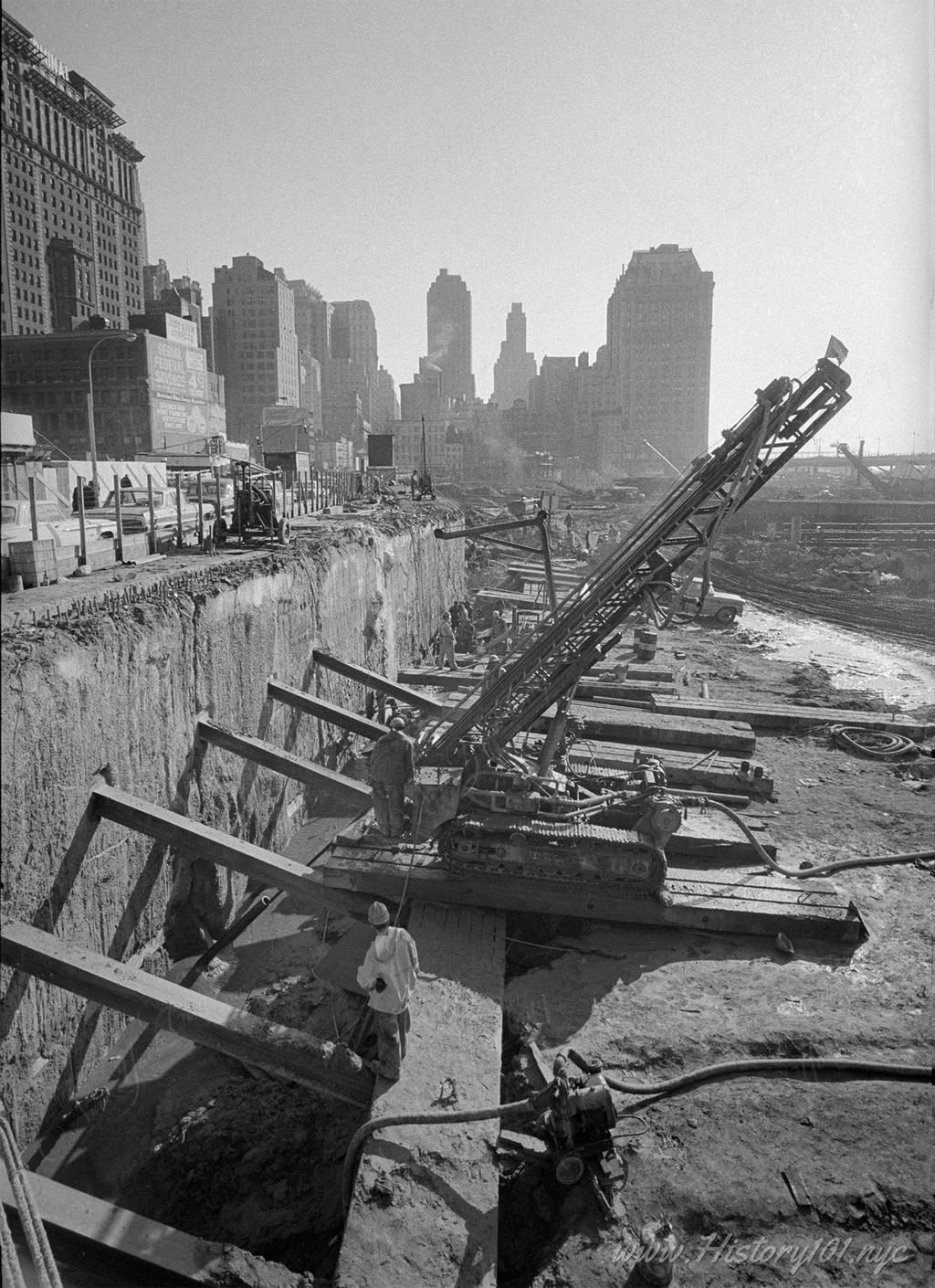
1968: World Trade Center Foundation Walls
Photograph showing wall supports for the foundations of the World Trade Center.
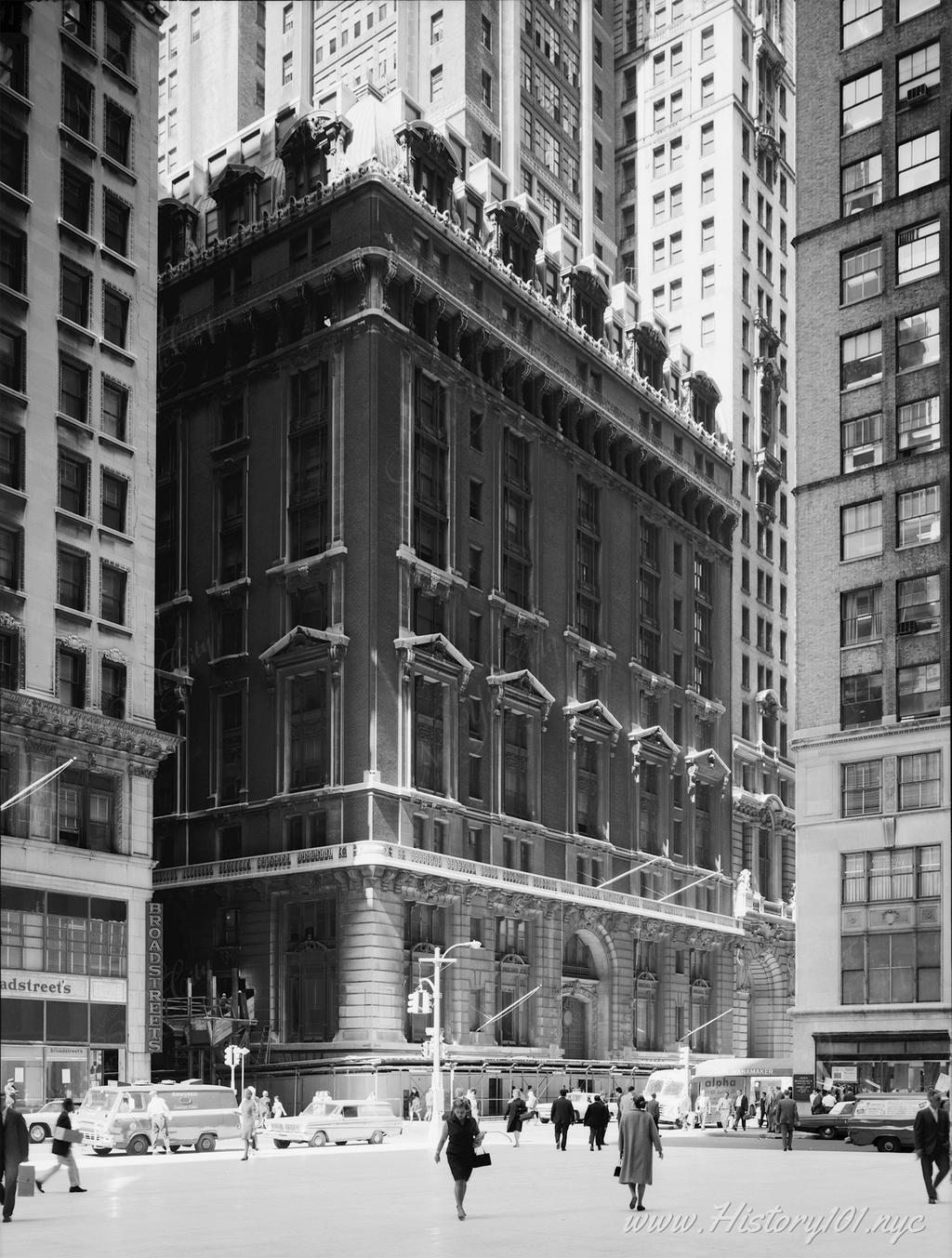
1967: Broadway and the Singer Tower
Photograph of 149 Broadway, The Singer Building Facade from the southeast.
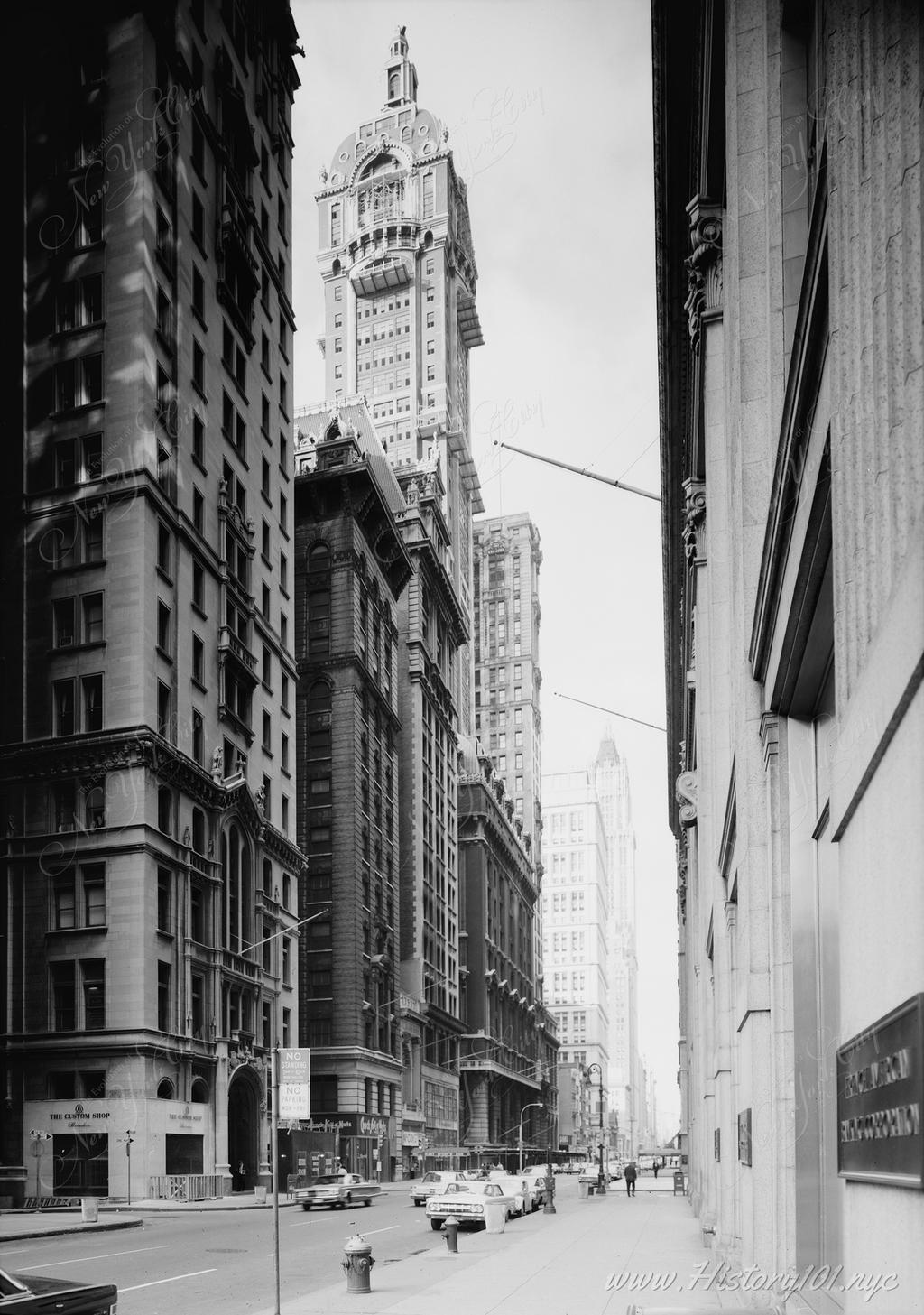
1967: The Singer Tower
A photograph taken by the Historic American Buildings Survey of the soon to be demolished Singer Tower at 149 Broadway.
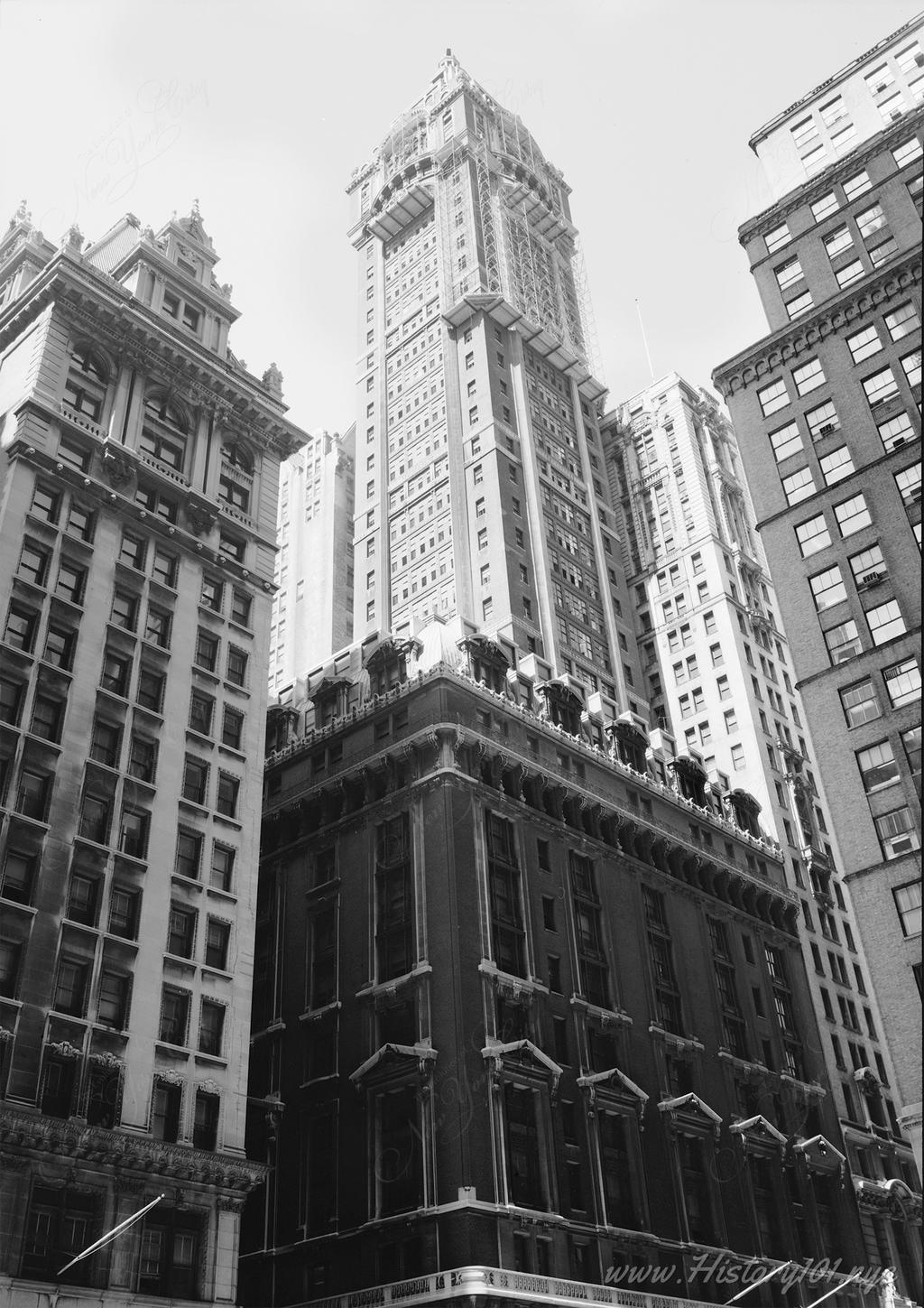
1967: Looking Up at The Singer Tower
Photograph taken from Broadway, looking up towards the Singer Building.
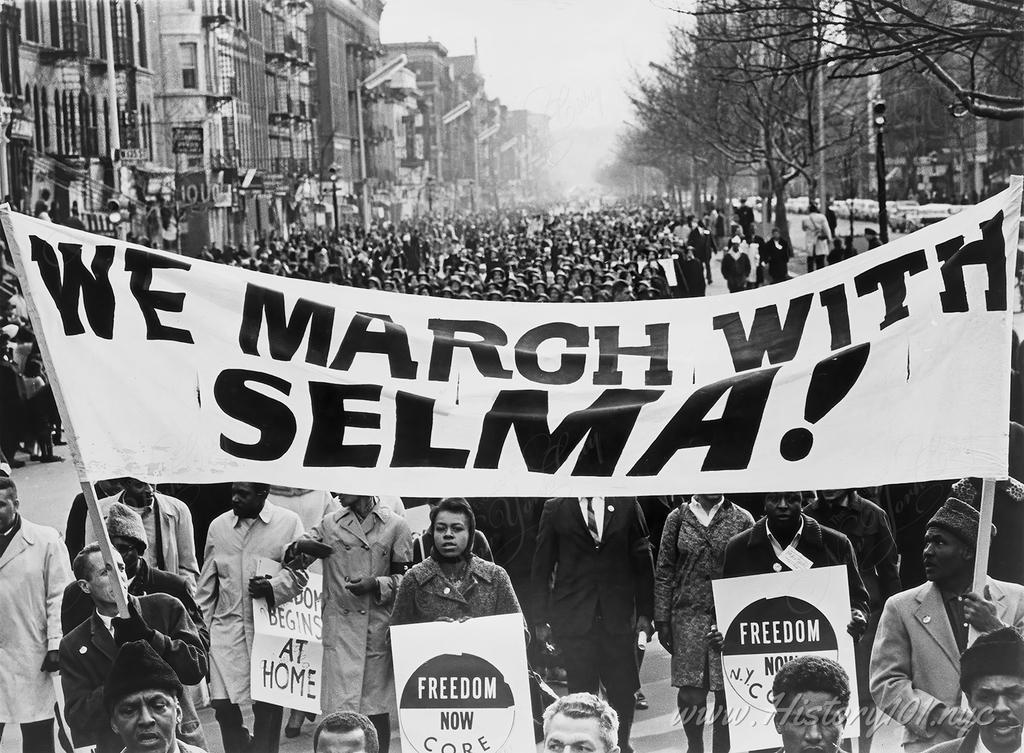
1965: Selma Supporters Protesting in Harlem
Photograph of marchers carrying banner and leading the way as 15,000 attend a solidarity march in Harlem.
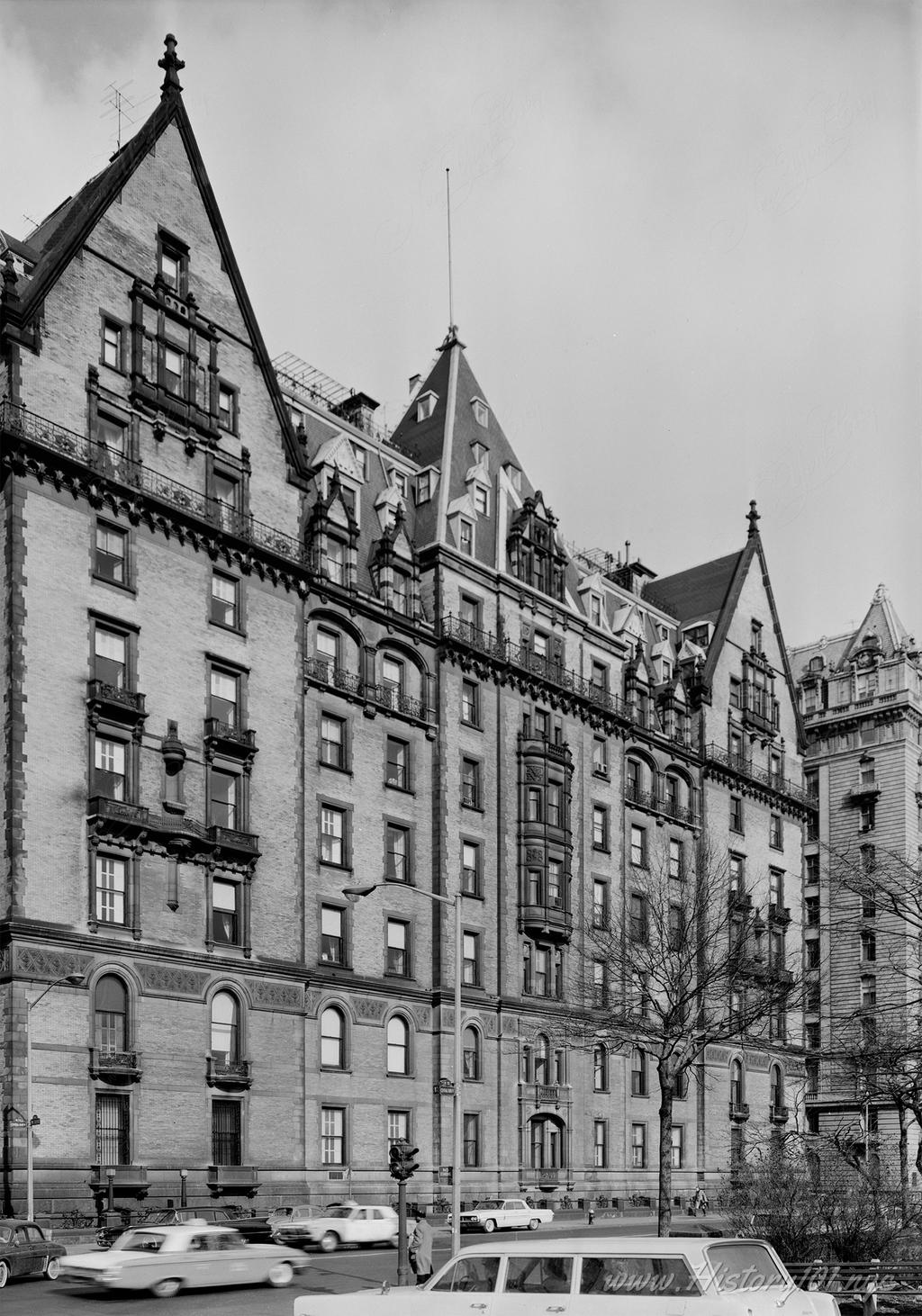
1965: The Dakota, Central Park West
Photograph of The Dakota Apartments, located at 1 West 72nd Street, Central Park West.
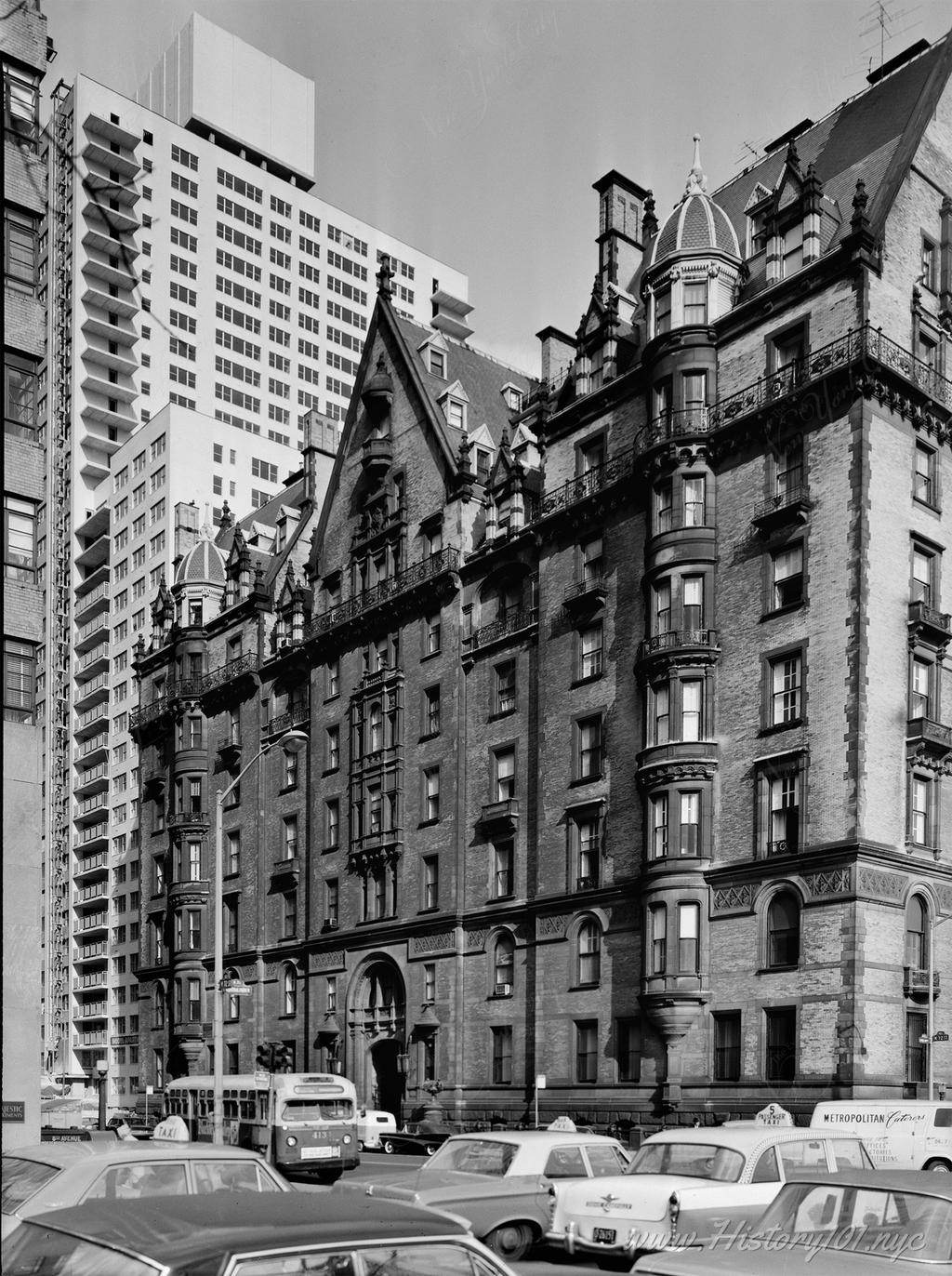
1965: The Dakota, Central Park West Corner
Photograph of the The Dakota Apartments taken from a corner in Central Park West.
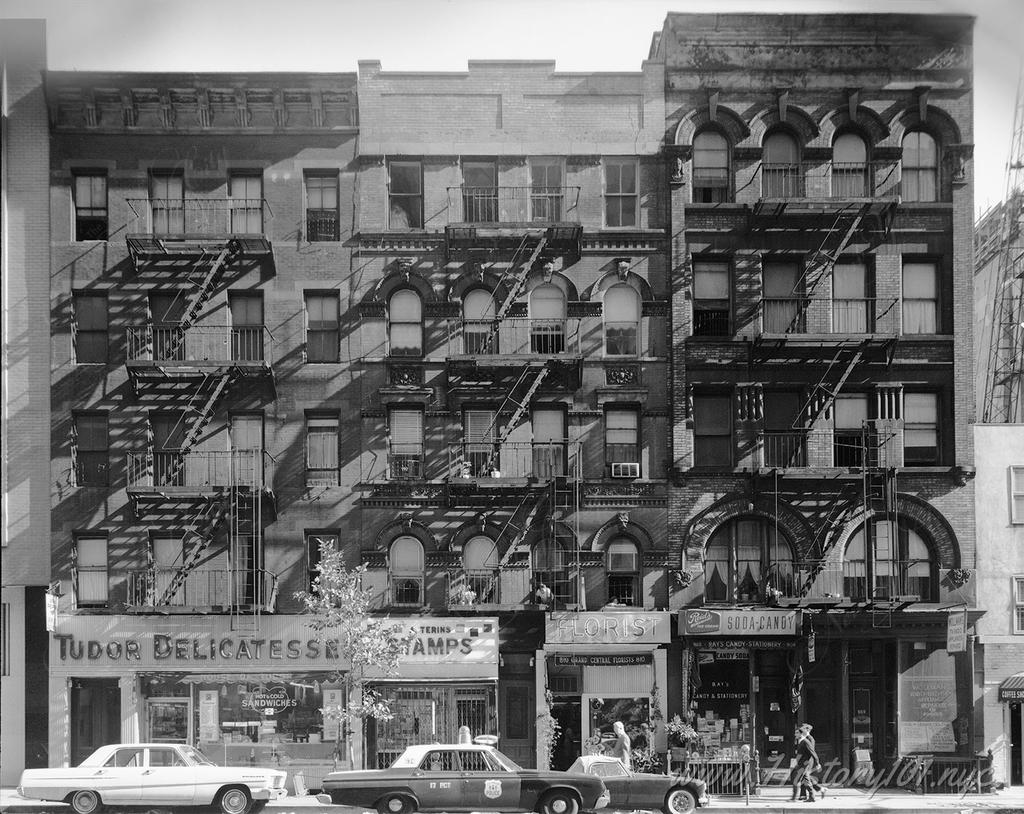
1966: Cars Parked on Second Avenue
Photograph firectly across the street from buildings and cars parked on Second Avenue.
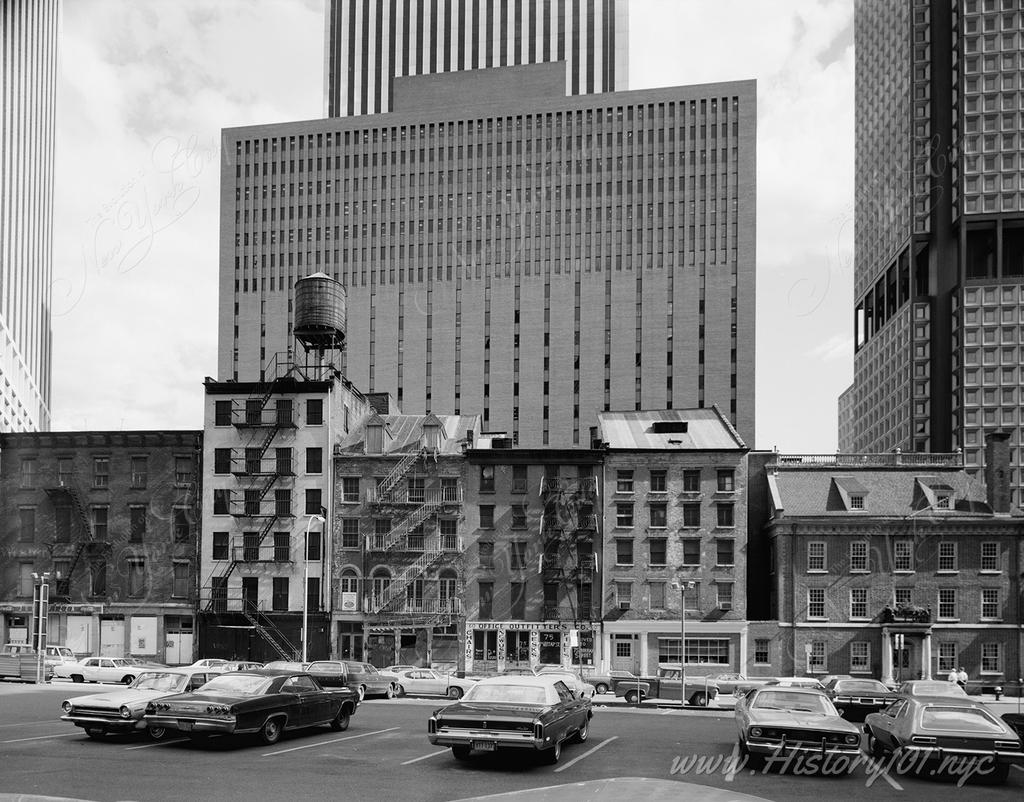
1967: Parking Lot on Water Street
Cars parked in front of Fraunces Tavern Block, Bounded by Pearl, Water & Broad Streets & Coenties Slip.
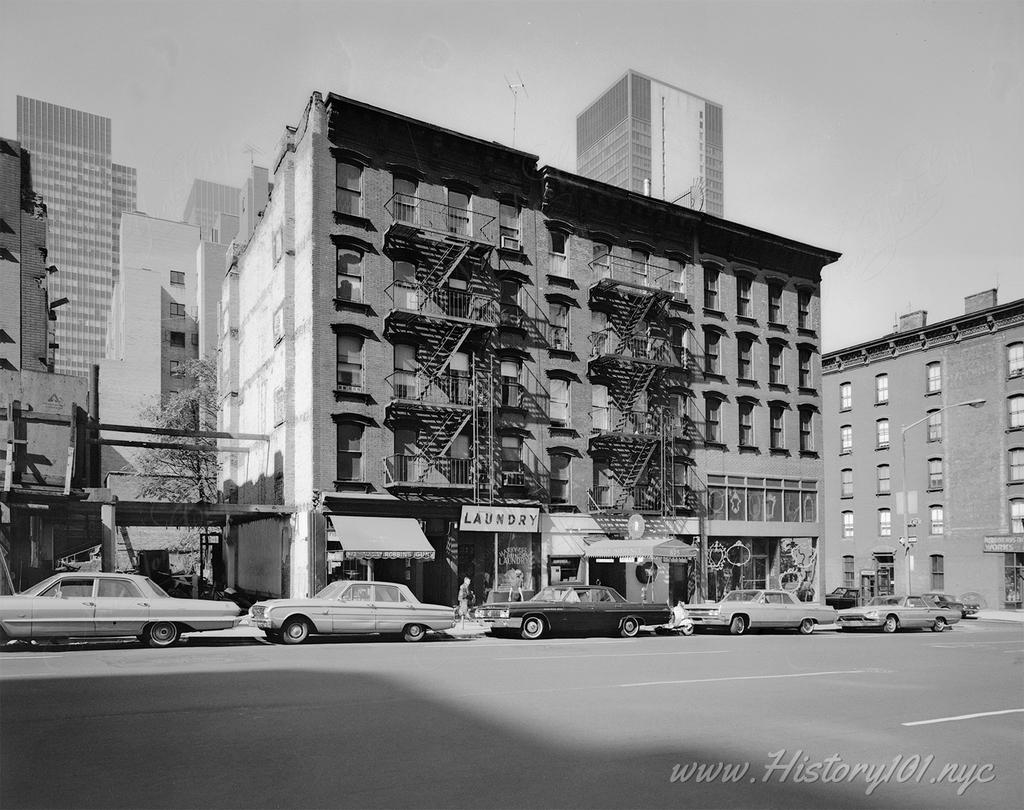
1966: Cars and Buildings on Second Avenue
Photograph of cars and buildings on Second Avenue and East 41st Street.
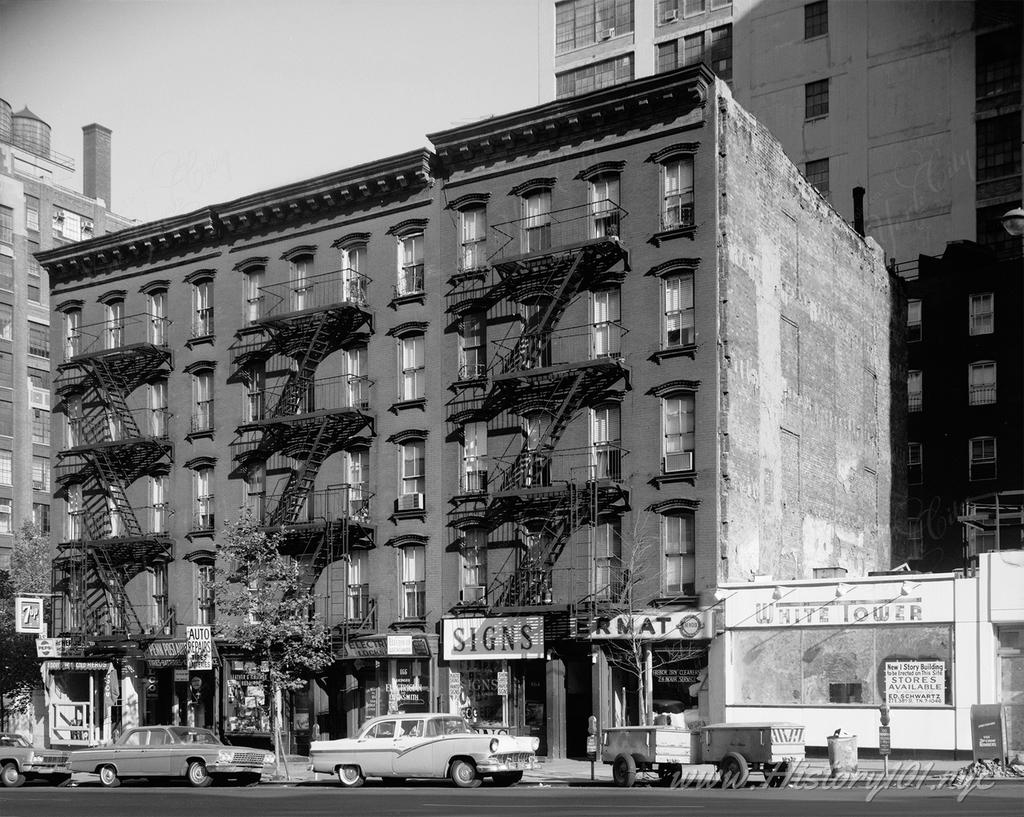
1966: Residential Buildings on Second Avenue
Photograph of classic cars parked in front of apartment buildings on Second Avenue, near the United Nations.
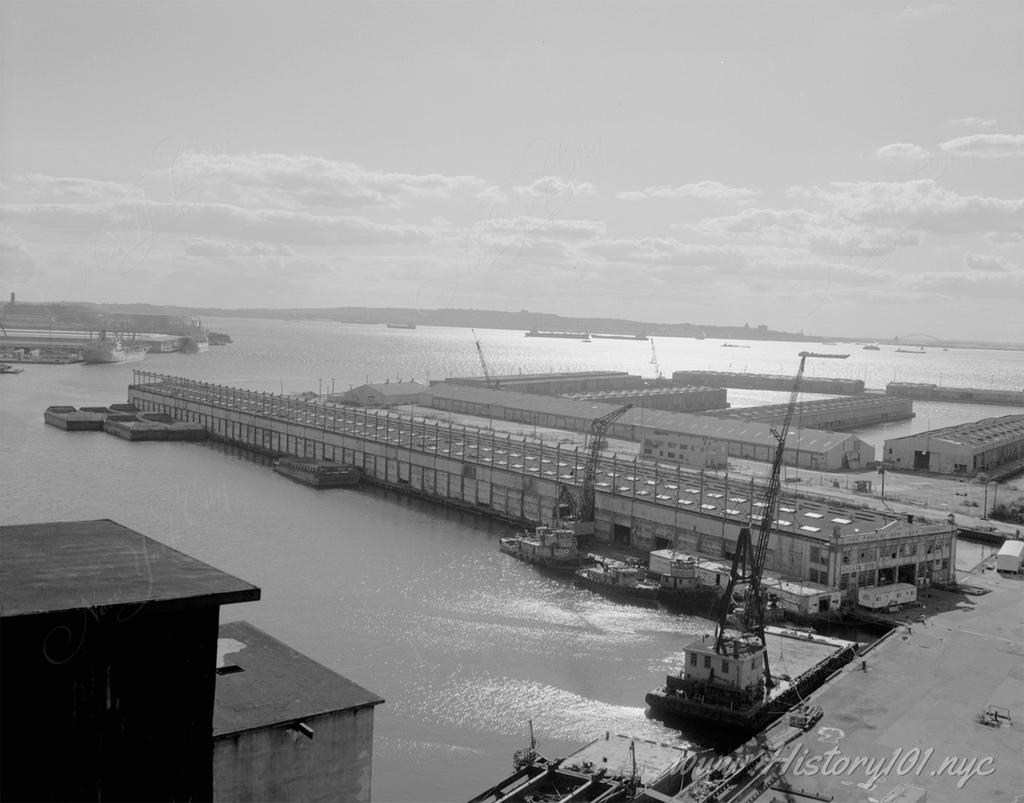
1968: Gowanus Bay Terminal Pier
Photograph of New York Barge Canal, Gowanus Bay Terminal Pier, East of bulkhead supporting Columbia Street, Brooklyn.
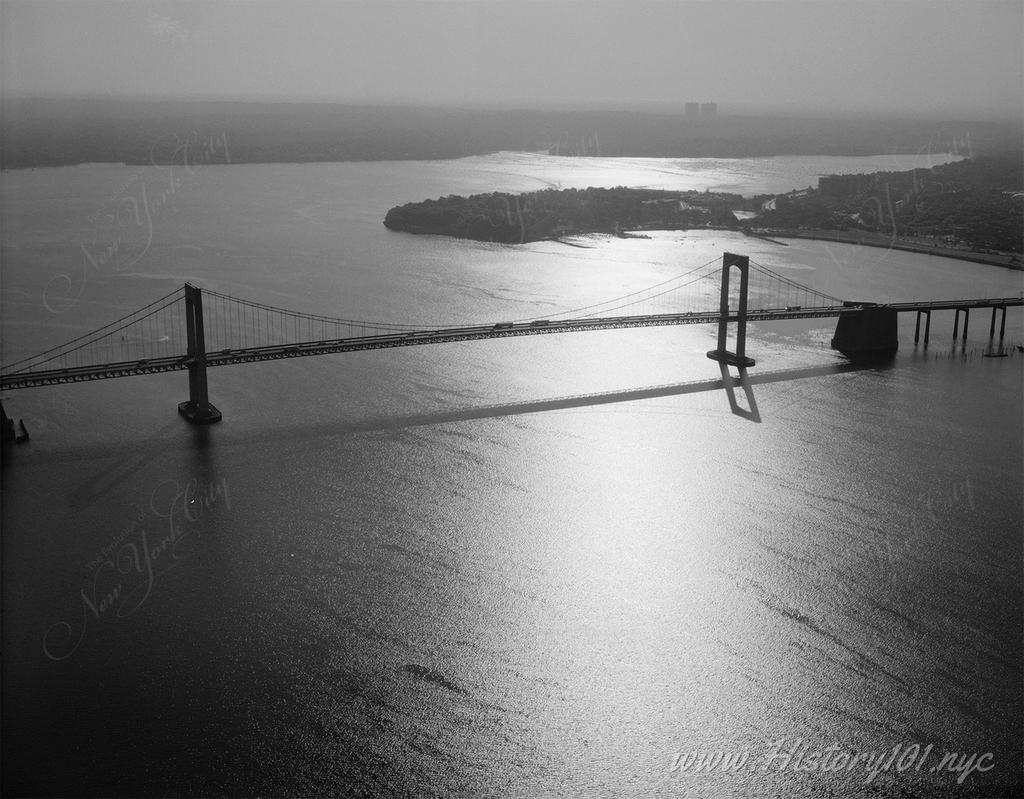
1968: Throgs Neck Bridge from Above
Aerial photograph of Throgs Neck Bridge, spanning the East River from Queens to the Bronx.
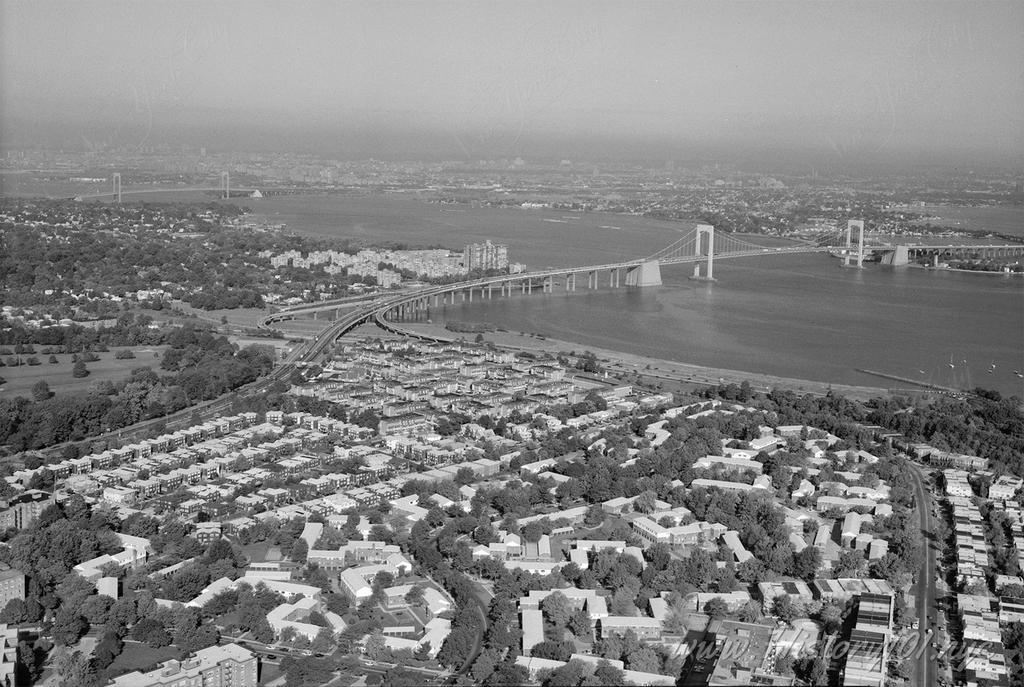
1968: Throgs Neck Bridge from Afar
Photograph of the Throgs Neck suspension bridge, taken from over Queens looking north towards the Bronx.
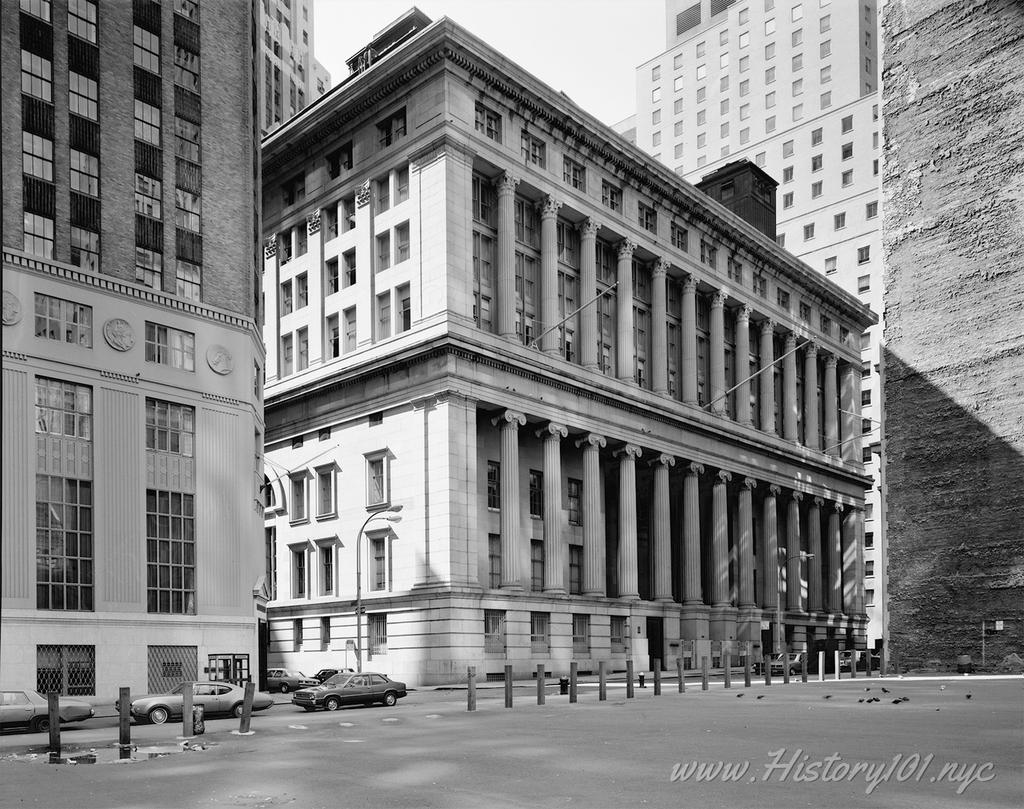
1965: National City Bank, 55 Wall Street
Photograph of the National City Bank, located at 55 Wall Street, New York City.
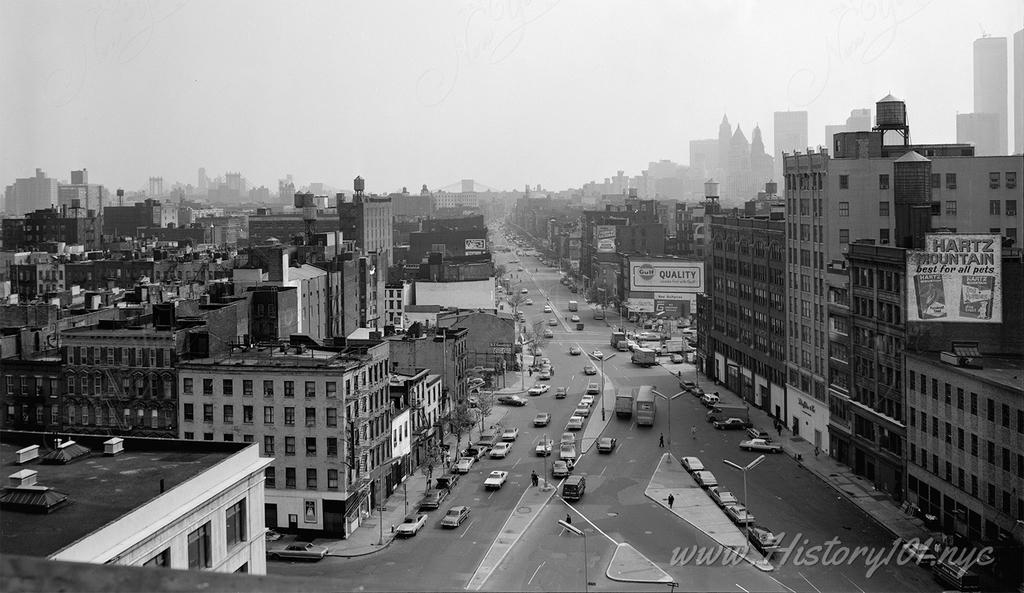
1968: Cooper Union Rooftop View
Photograph of lower Manhattan looking south from the roof of the Cooper Union Building.
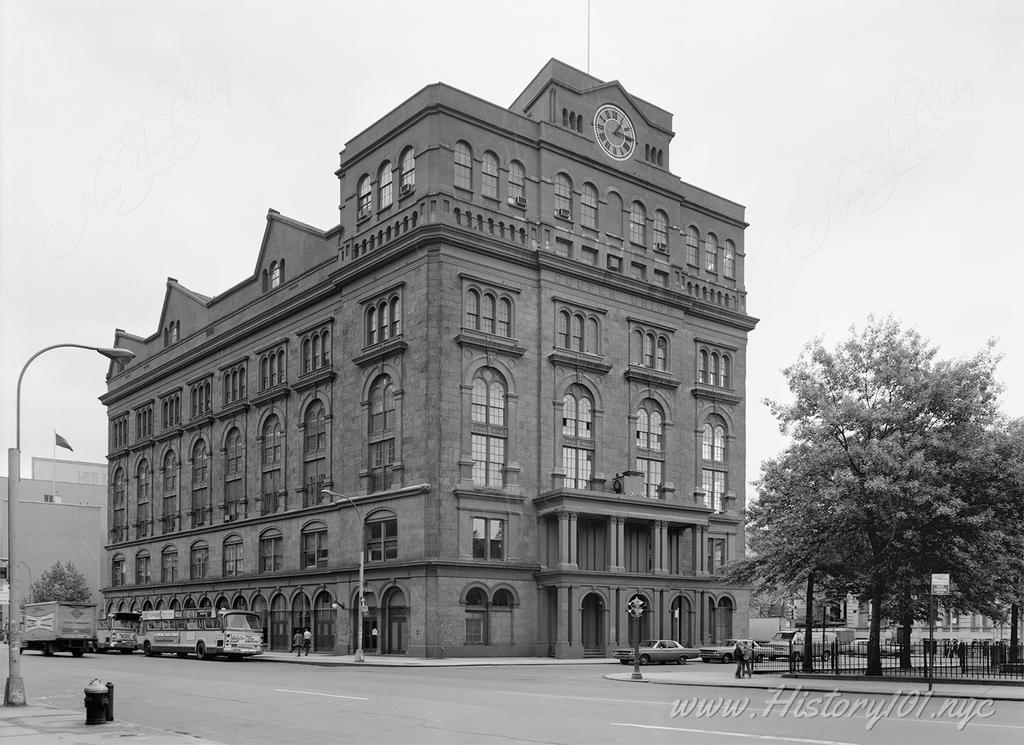
1968: Cooper Union 3rd and 4th Avenue
Photograph of Cooper Union for the Advancement of Science & Art, on Third & Fourth Avenues at Astor Place.
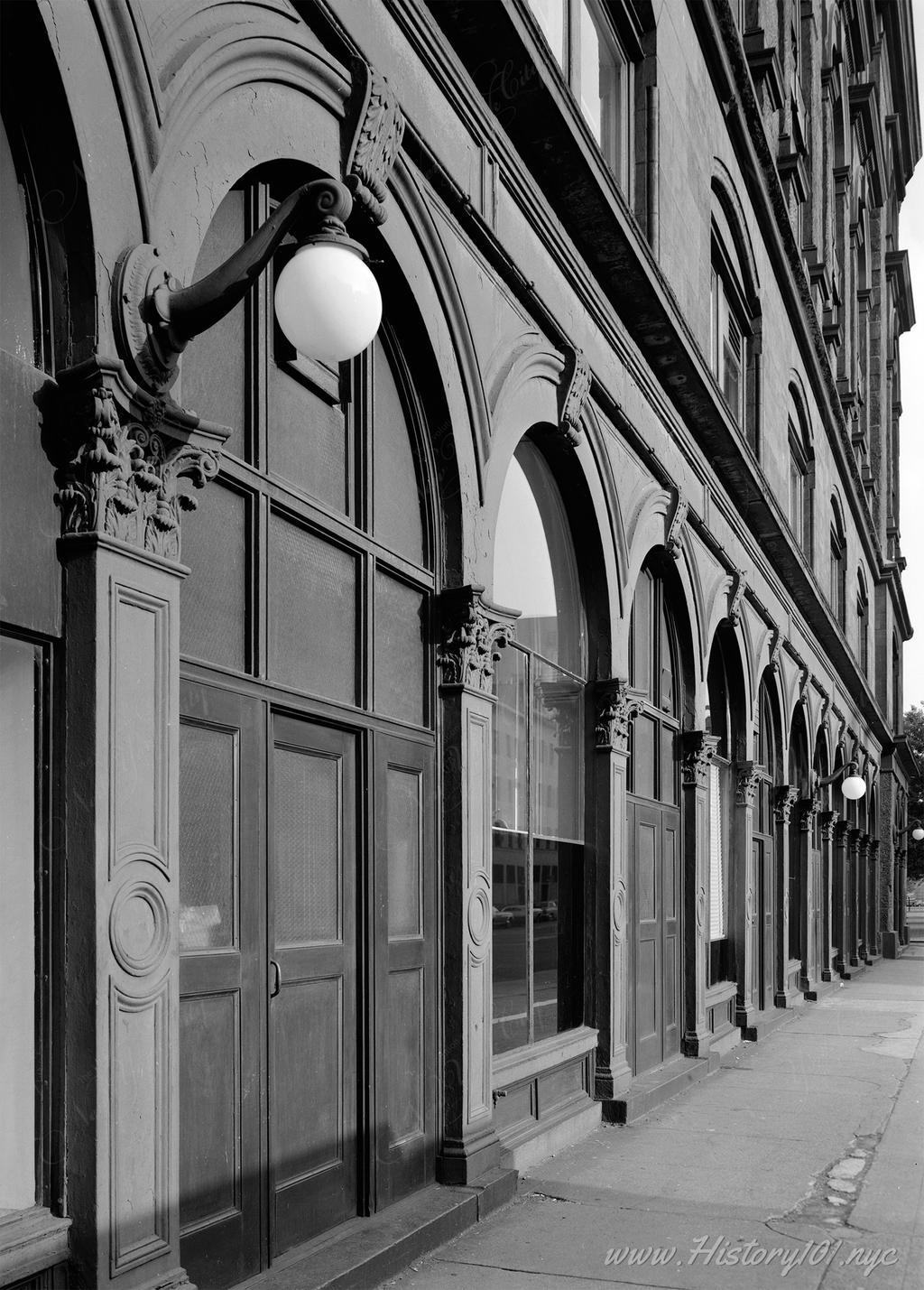
1968: Cooper Union Facade
Photograph of Cooper Union's carved stone facade, showing off the building's architectural details.
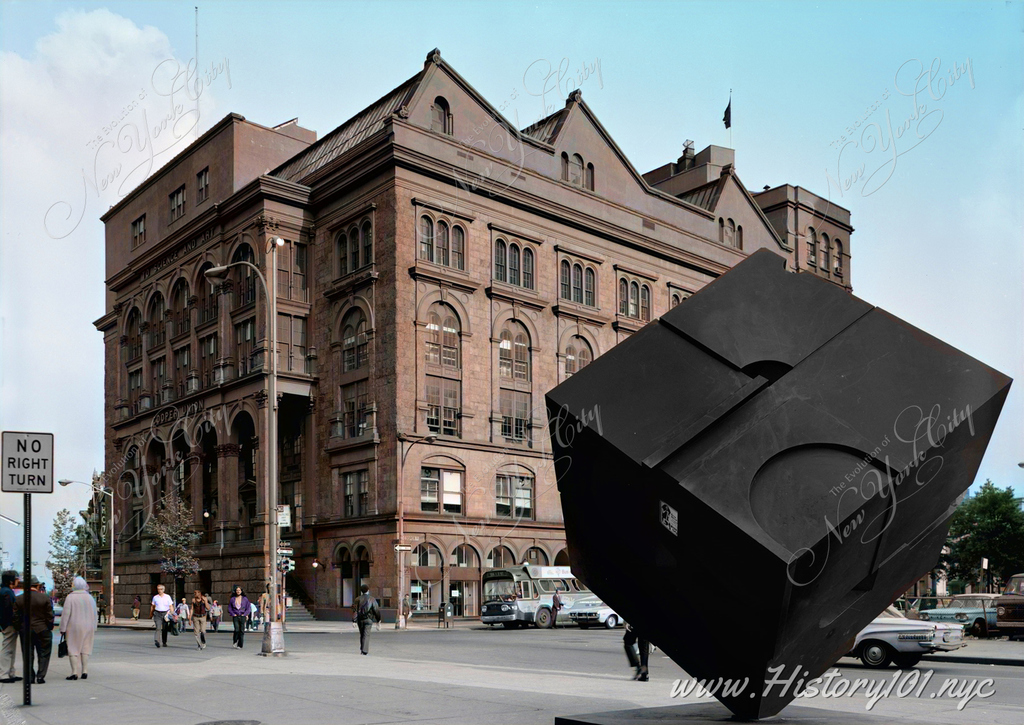
1968: The Alamo Cube: An Enduring Symbol of Art and Community in NYC's East Village
Discover the story of The Alamo, an iconic rotating cube sculpture in NYC's East Village, embodying art and community spirit since 1967
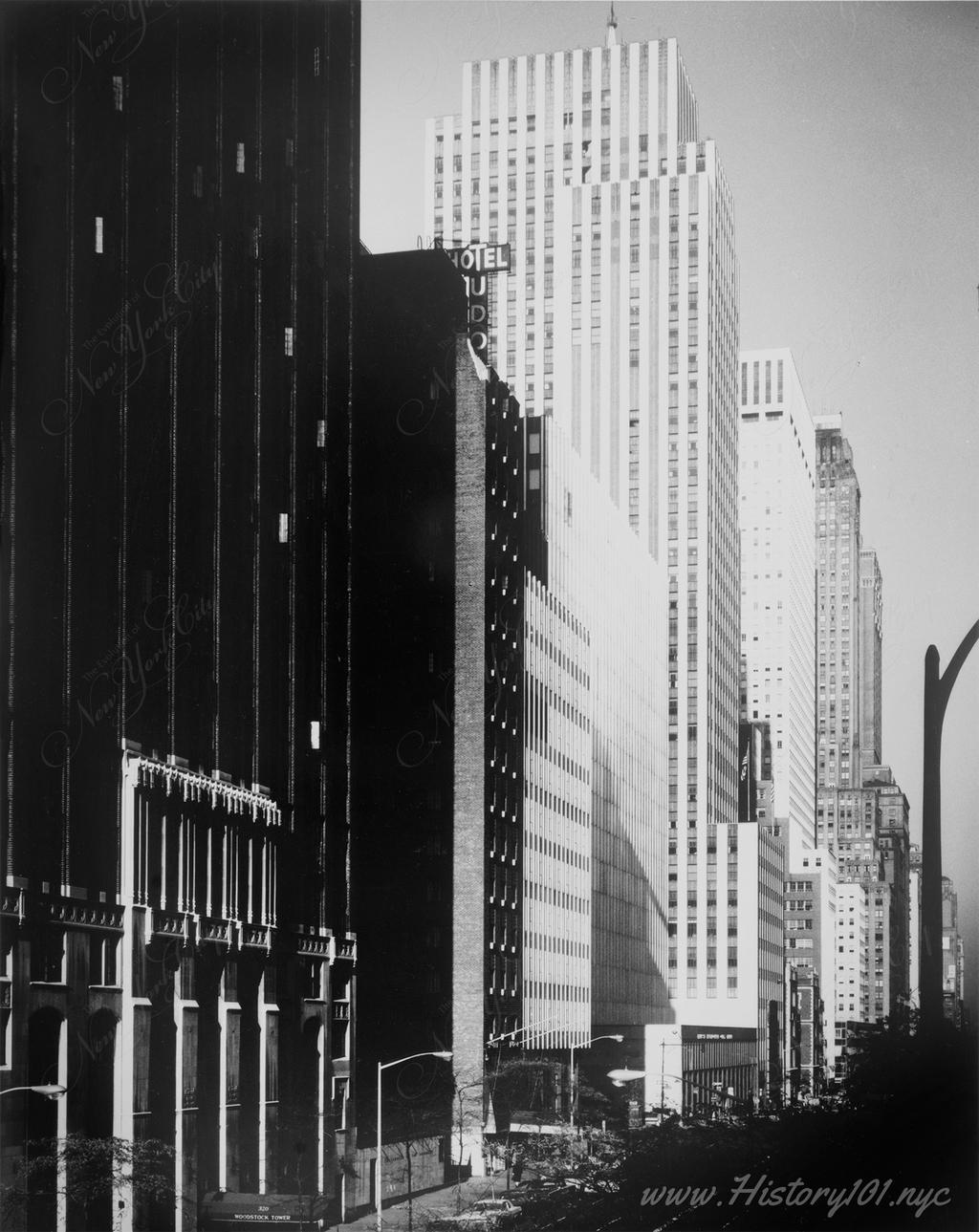
1966: Daily News Building
Photograph of the Daily News Building, located at 220-226 East 42nd Street, Manhattan.
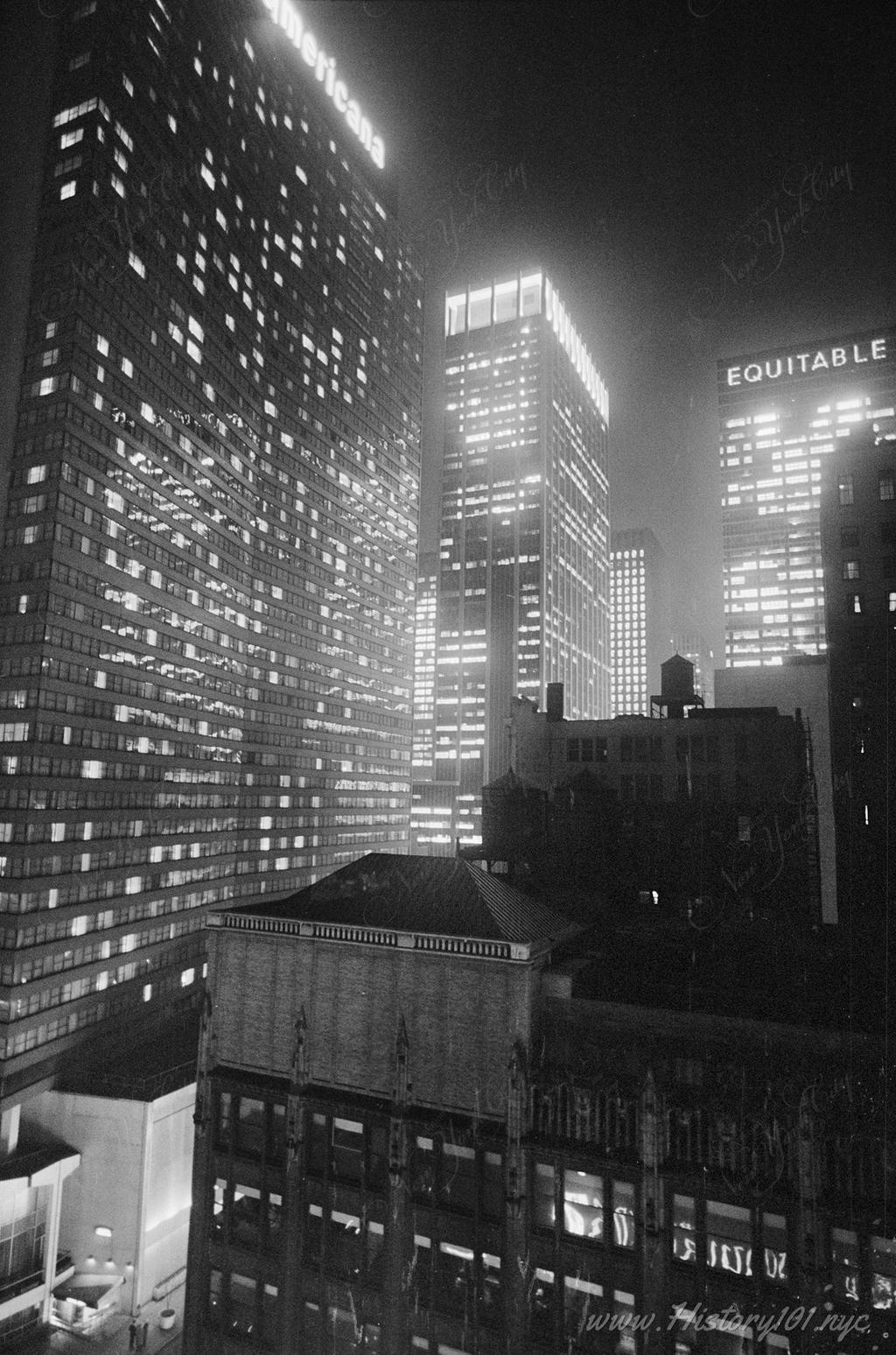
1967: Skyscrapers at Night
Photograph of the Equitable Building and surrounding skyscrapers and Manhattan rooftops illuminated at night.
